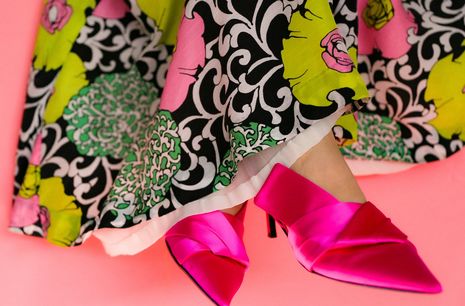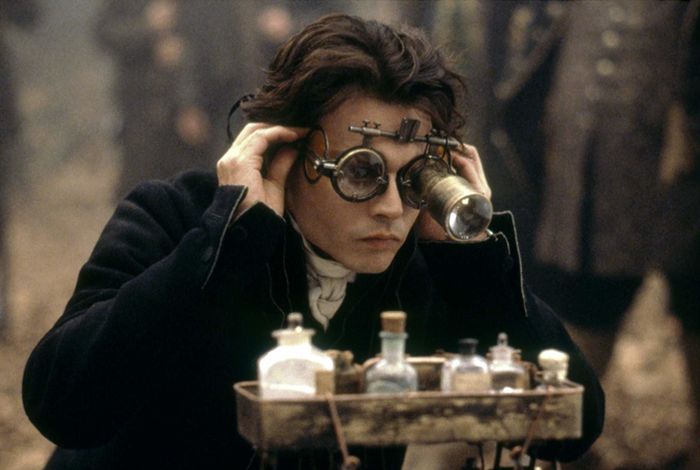Style Lessons from Ugly Betty: more is more
Nafisa Mahmood delves into the world of Ugly Betty and what we can learn from her eccentric style

On a revision procrastination evening, I decided to rewatch Ugly Betty. It follows unchic Betty Suarez as she navigates the Machiavellian ways of fashion magazine, “Mode”. Of course, the show is utterly satirical. The crises the magazine faces are more about kidnapping, extortion, or murder in the name of couture than about couture itself. Yet, underneath the clichés and slapstick comedy, there is an unsettling truth about how far we are willing to go for fashion. Or, perhaps more accurately, how far fashion pushes us.
“Betty remains true to her garish and eccentric style”
The fictional “Mode” is a microcosm of an issue that the real-world fashion industry perpetuates: an undying pursuit of commercialised vanity that leaves little to be desired for our personal wellbeing. We assign ourselves to the tribal hashtags of #darkacademia or #oldmoney or #cleangirl because there is comfort in style communities. They act as an extension of who we are or who we want to be. The issue begins when we deem these aesthetics to be sacrosanct. Here, we fall prey to an industry that weaponises the things we hold dear for the sake of its own commercial gain.
It is no secret that our presence on social media has increased post-pandemic. Interestingly, there is pressure to conform to what has been baptised as ‘cool’ en-masse—where the only way to soothe the itching of FOMO is to press ‘add to basket’ on the last clothing item that wandered onto your Tik Tok feed and straight into your Google search. Don’t worry, there is no delay. The sewing machines of the fashion industry stand ready to overproduce. Inevitably, more is destined for landfill, just in time for the internet to move on to the next thing that sends its heart racing.
“We are entering an era where there is a growing embracement of ‘more is more’”
In the height of the pandemic, you might remember that Lirika Matoshi strawberry dress. With glittery embellishments and a pink tulle skirt made for twirling in an Austen-esque field, the dress satiated the cottagecore demands of the masses. Or take House of Sunny’s psychedelic swirl Hockney dress that became a cult item with its distinct lily pad print. In both instances, two somewhat sustainable brands inadvertently helped to create the unsustainable overproduction, accumulating as a result of the demand for a more affordable and accessible option. As per the speed of current trend cycles, both dresses and their dupes were quickly exiled from public opinion. Two years on from their heyday, they are found stuffed at the back of closets, as a mere memory of the excitement they once sparked, never to see the light of day. That’s if they haven’t already been tossed in landfill.
Lirika Matoshi's strawberry dress
This is where Betty Suarez comes in. An Ugly Betty renaissance is on the horizon; bold sweater vests, layered over blouses with even bolder prints, a paragon of Miuccia Prada’s ‘ugly chic’. We are entering an era where there is a growing embracement of ‘more is more’. This alternative style confronts boring sophistication, utilising bright colours and prints and playing on a childlike creativity. If the show hadn’t been cancelled in early 2010, we probably would have seen Betty entirely clad in Miu Miu’s swallow print. And if there ever is a reboot, it wouldn’t be a surprise to catch her in looks like Miu Miu’s Pre Fall 2020 collection, filled with the Peter Pan collars, mismatched textures and colourful leggings that we know, and love her for.
Miu Miu's Pre Fall 2022 collection
‘Ugly fashion’ prioritises practicality. Betty lives in comfortable silhouettes and low heels. As such, she navigates the halls of Mode and the streets of New York with an ease to be envied, and the Crocs/Dickie’s/dad shoe wearers of today have clearly caught on.
Betty’s colour matching defies all laws of colour theory, yet somehow it still works. She is a lasting reminder that being loud in clothing should not be a crime. Betty’s style does not reflect a fleeting trend, but is a conscious effort to celebrate her inner identity. Betty is the antithesis of haute couture: her disruptive pops of neon contrasting the otherwise sleek inhabitants of the Mode office. It’s time we retire New Girl’s Jessica Day as the reigning queen of twee: that title has always belonged to Betty.
We ought to learn from Betty Suarez. With each episode, she stumbles into the offices of Mode in clashing colours and prints—not because of an overwhelming pressure to conform but because that is the style true to her. Betty remains as bright-eyed and bushy-browed, brushing off the constant criticism from her colleagues and disregarding the omnipresent image of trendy clothes surrounding her. Where early Noughties media was enamoured with makeover montages, concluding with a completely transformed appearance of the female lead, Ugly Betty deviates from this tired plot. Instead, Betty remains true to her garish and eccentric style throughout the run of the show.
The show ends with the title on the screen and the word ‘ugly’ fading away, leaving us feeling that the description of Betty has always been ironic. It was never Betty that was ugly: it was the unscrupulous demands of the fashion industry that were. Like her, I hope we can stop buying into these demands.
 News / Clare Hall spent over £500k opposing busway 24 December 2025
News / Clare Hall spent over £500k opposing busway 24 December 2025 News / Caius mourns its tree-mendous loss23 December 2025
News / Caius mourns its tree-mendous loss23 December 2025 Comment / The ‘class’ of Cambridge24 December 2025
Comment / The ‘class’ of Cambridge24 December 2025 Comment / Yes, I’m brown – but I have more important things to say22 December 2025
Comment / Yes, I’m brown – but I have more important things to say22 December 2025 Interviews / Politics, your own way: Tilly Middlehurst on speaking out21 December 2025
Interviews / Politics, your own way: Tilly Middlehurst on speaking out21 December 2025










